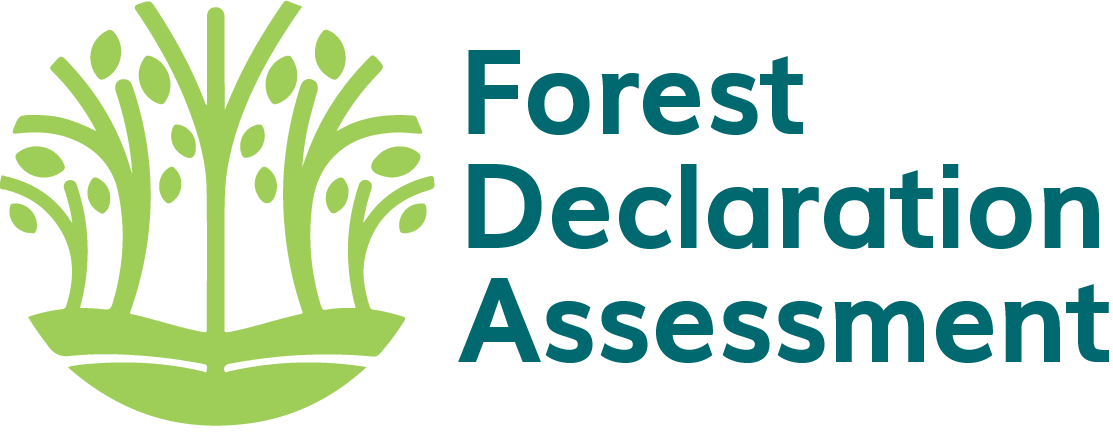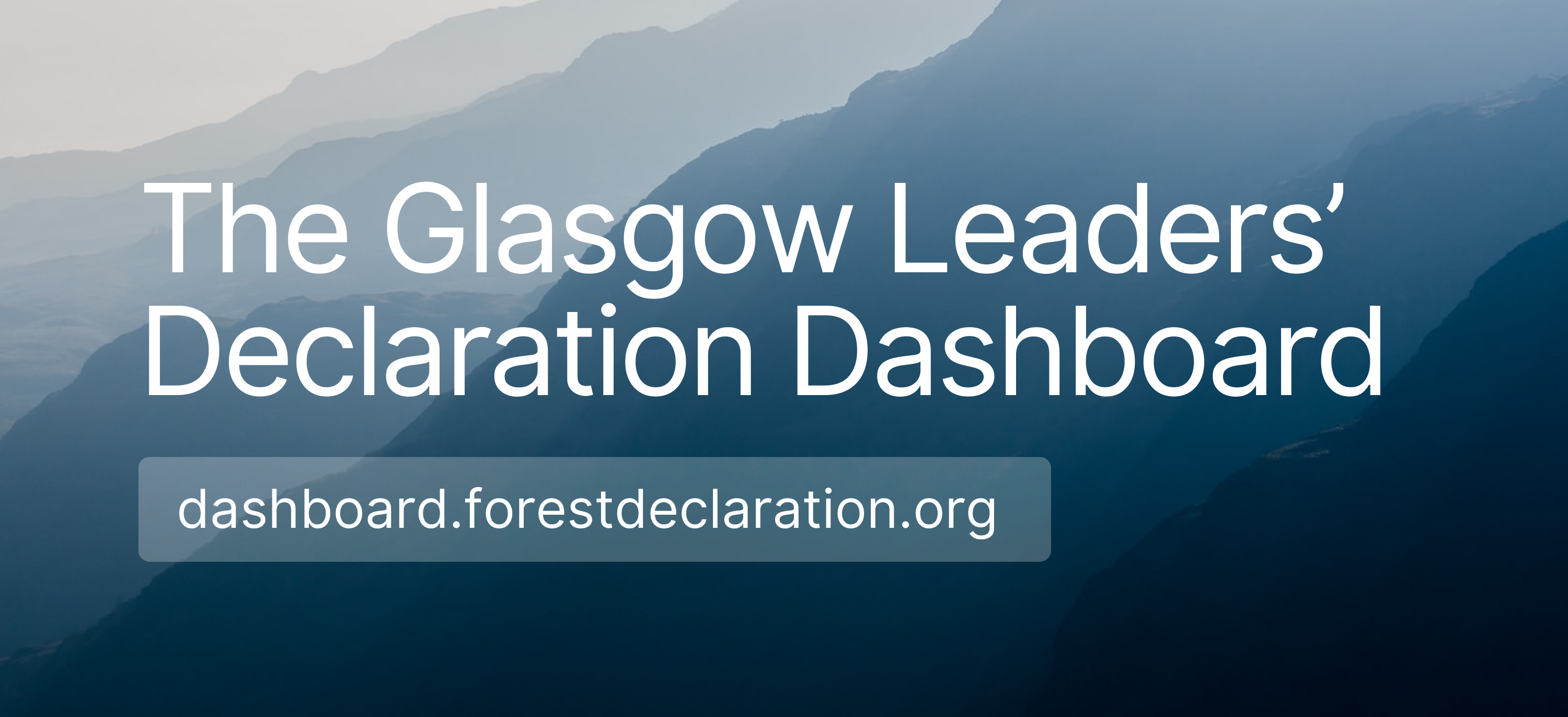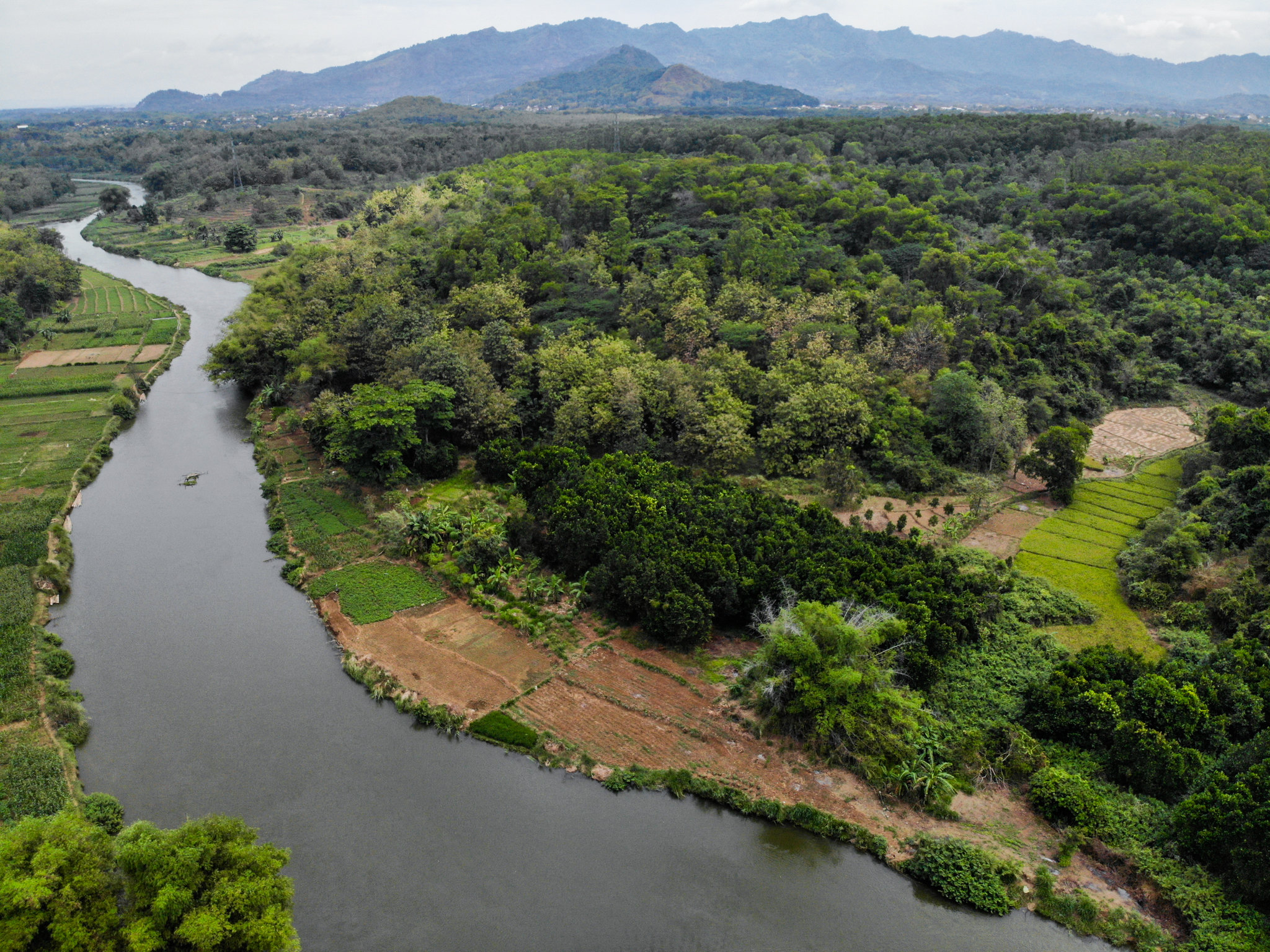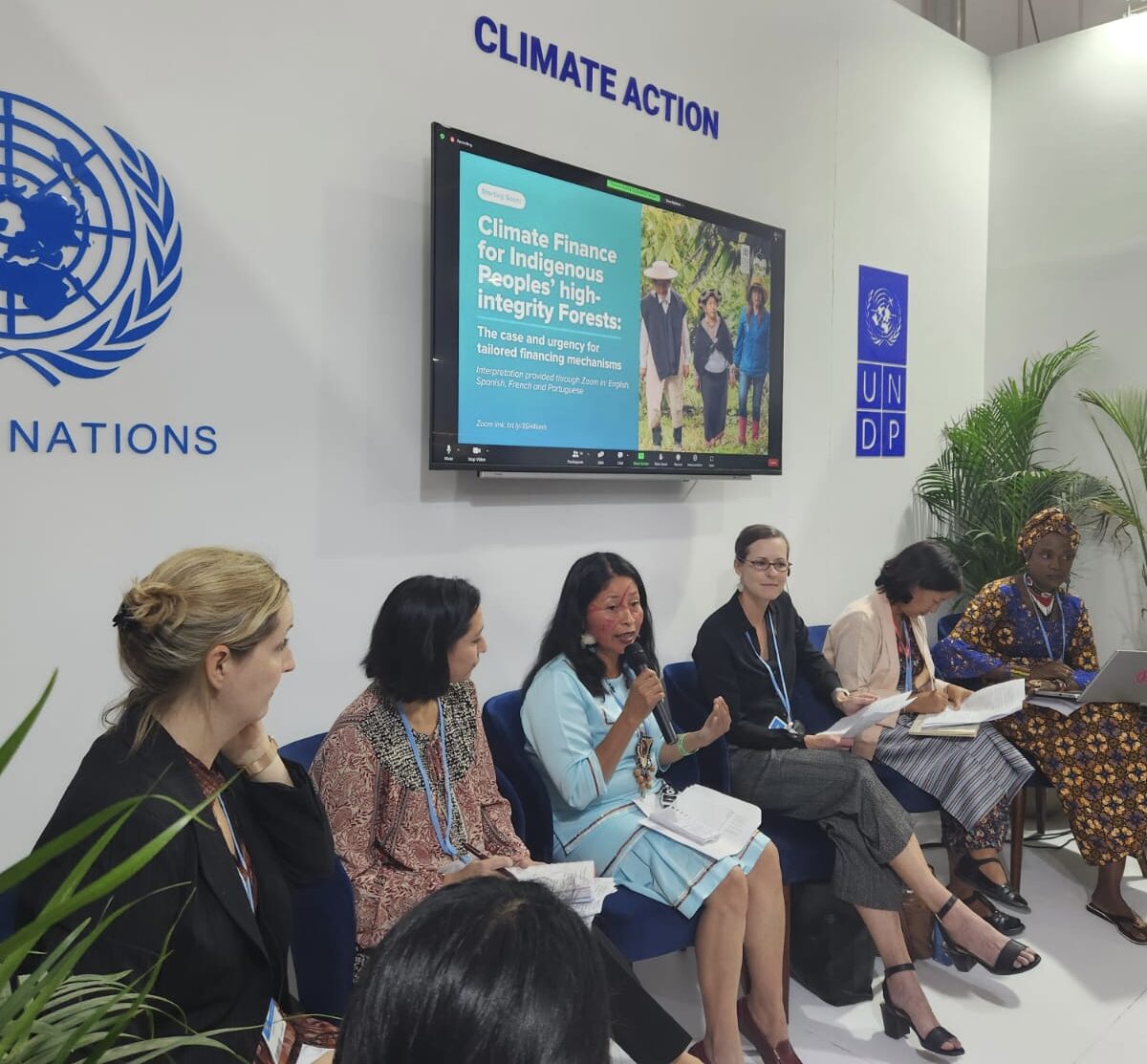by Gema Andreo Victoria and Imogen Long
According to the Forest Declaration Assessment’s 2022 Finance for Forests assessment, current public finance for forests amounts to less than 1% of the finance needed to meet the global goal of halting and reversing forest loss by 2030. In total, global public finance for forests averages USD 2.3 billion per year, including both domestic and international sources. Even if the ambitious forest finance pledges announced in 2021 are fully delivered, a large investment gap will remain.
Currently, by far the largest share of trackable finance for forest-based climate mitigation and adaptation comes from public sources. Estimates show, however, that large volumes of public investment also pose significant risks to forests. “Grey” finance – finance for activities that have the potential to drive deforestation and forest degradation – far outweighs investment that promotes sustainable commodity production and forest protection, restoration, and sustainable management ("green" finance). The 2022 Forest Declaration Assessment found that between 2010 and 2020, grey public finance flows totaled over USD 270 billion – on average, over 10x the volume of public green flows.[1]
Comprehensive data on private finance for forests is unavailable, however, anecdotal evidence suggests that private finance follows the same trend. In the past decade, private green finance has been estimated to reach several billion USD annually, while estimates of private grey finance have been found to exceed USD 7 trillion.[2]
There is an urgent need to scale up private sector finance for forests and, at the same time, ‘green’ existing finance flows. In March 2023, the Sixth Global Landscapes Forum (GLF) Investment Case Symposium brought together a wide range of stakeholders — including governments, private sector, financial institutions and civil society organizations — to reflect on the opportunites for closing the gaps in financing for nature-based solutions (NbS), including forest investments. In particular:
- Key success factors that can support successful private investment include working locally, creating partnerships, and developing a clear business case.
- “Blended finance” can create an enabling environment by de-risking investments and leveraging much-needed private financial flows.
In this context, the real questions are: How do we define and design “blended finance”? Why is it key to closing the forest finance gap? And how does it work in practice?
What is blended finance?
Blended finance involves the use of public and/or philanthropic capital to raise private finance. It combines different financial tools (e.g. grants and loans) and investment sources, often including a mix of private, public, or philanthropic capital. Crucially, it involves considering different financial risk and return profiles when matching investors.
A group of investors with complementary profiles might have different objectives; blended finance can allow them to meet these in parallel, from financial returns to environmental/social impacts, or both.
Blended finance should therefore be understood as a financial structure, not as a single instrument, where concessional (e.g. grants) and private finance are combined to invest in projects with (perceived) high risks and uncertain returns.[3]
Why is blended finance necessary for closing the gap to finance forests?
Going back to the root of the problem brings us to basic economic theory. Financial investors are motivated by the prospect of profit, balanced against the risk of financial loss. Forests, though, provide benefits that are difficult to monetize, such as harboring biodiversity, sequestering carbon, and providing other ecosystem services like air and water quality. Because these benefits traditionally have no monetary value, they are less attractive to investors.
In contrast, investments that extract goods from forested areas – like logging and deforestation for agricultural production – produce harms (negative externalities like environmental degradation and impacts on local communities) that are not factored into market prices for those goods. At the same time, many local social challenges lead investments in the protection and sustainable management of forests to be perceived as risky. Thus, private investment along these lines has been limited.[4]
Meeting forest finance needs by 2030 requires both public and private finance to be invested in the ‘right’ way: maximizing positive forest impacts while actively minimizing negative impacts. This will require a considerable scale-up of private finance, as well as greater collaboration between public and private funders, to help overcome investment barriers.[5]
Public (and other concessional) finance. One of the core objectives of public finance is to correct the mismatch between market functioning and social welfare. Therefore, public investments should, in theory play a crucial role in solving these market failures. However, with limited international aid, high levels of government debt and growing economic hardship, public finance alone cannot meet the magnitude of the problem and the required investment needs for financing forests.[6]
Private finance. Following the same economic rationale, the private sector alone does not have enough incentives to invest the large amounts required to close the existing forest finance gap. Most forest investments are perceived to present high upfront costs and potential risks for limited returns and social and environmental benefits which are difficult to monetize. Forest projects therefore compete at disadvantage with other types of investments with lower risk profiles and more guaranteed, shorter-term returns. Other reasons for the lack of incentives link to poor awareness of the role of ecosystem services and their valuation; the absence of specific investment taxonomies and standardized frameworks; knowledge gaps in identifying bankable projects, and potential political instability in project geographical location.[7]
Role of blending. By combining public and/or philanthropic finance with private capital and designing effective blended finance tools, public financing can act as a catalyst for investments from the private sector by de-risking investments in these activities. Public-private partnerships can create the enabling investment environment necessary for incentivizing private sector action.
Blended finance targets synergies in the investment rationales of different actors, addresses key barriers for both public and private actors, and can be a vital tool for addressing the forest financing gap.[8]
How do you design blended finance instruments?
Effectively designing blended finance structures involves selecting the appropriate set of financial instruments according to the characteristics of the project and the different investors involved. The most commonly used financial instruments in blended finance are explored below.[9]
Grants are financial awards often given as a donation (without payback under most conditions). Grants are especially suitable for projects with lower or uncertain revenue streams and have historically represented the majority of finance for forest and landscape restoration. In a blended finance instrument, a grant is typically used to pave the way for private finance; lowering investment risk and making an activity more attractive to commercial market players. Potential sources of finance for forest grants include multilateral climate funds, multilateral development banks, bilateral climate finance, national climate funds and philanthropic foundations.
Equity investments involve buying a share of a company with the expectation of receiving a share of earnings when it becomes profitable. Equity investments can be made at market-based rates, which match other prices in the market, or at concessional rates, which are significantly lower than others available on the market and are offered with more favourable terms. Equity investments often operate in the form of funds and investors obtain returns through dividends or capital gains from the sale of equity stakes. Equity is well-suited to projects with revenues expected in the medium or long term. Through equity, public financing can support projects’ upfront investments, reducing risks for private investors and therefore leveraging additional finance, while becoming a source of public income via returns on investments.
Debt involves a financial transfer from one party to another, where the receiving party has a contractual obligation to repay in the future at agreed interest rates. Debt may be owed by a sovereign state, local government, company, or an individual and can take the form of loans or bonds. These instruments are especially suitable for projects with returns in the short term, and bonds are more appropriate for larger-scale projects due to transaction costs.
Guarantees are instruments that provide protection to investors in the event of risk of capital loss. Targeted credit guarantee programs are a powerful tool to incentivize private finance in forests by de-risking investments.[10] Multilateral development banks often provide guarantees to support private sector investments and governments entering into commercial debts.
How does it work in practice?
There are many opportunities to expand the use of blended finance in the context of forest finance by choosing the most appropriate combination of instruments. Some common structures in this context include grants and/or equity to (partially) cover upfront investment, concessional loans and sovereign guarantees attached to commercial loans (resulting in lower interest rates). Other options are sustainable forestry funds combining equity and debt investment from different types of organizations (including philanthropic and public investors), or grants providing concessional loans and equity that restoration projects or natural asset companies can use as leverage to attain equity investments from private sources.[11]
| Case study 1: Restoration Seed Capital Facility[12] The Restoration Seed Capital Facility (RSCF) is a funding facility aimed at stimulating private fund managers and investment advisors to create new funds that target forest and landscape restoration. For that purpose, RSCF provides early-stage support in the form of reimbursable grants for fund, pipeline and project development. By promoting private investments through blended finance, the RSCF aims to scale up forest and landscape restoration. Since the initiative was launched in 2020, it supported seven investments in Latin America, Sub-Saharan Africa and South-East Asia. RSCF runs with public financing from the governments of Luxemburg and Germany and is implemented by United Nations Development Programme and the Frankfurt School of Finance and Management. The Facility will be operational until 2027. Arbaro Advisors, an investment advisory company with expertise in impact investment and forestry management, was one of the first successful applicants. The RSCF supported Arbaro advisors to develop the Arbaro Fund, a private equity fund that invests in sustainable forestry in Latin America, the Caribbean, and Sub-Saharan Africa. Additionally, three specific projects received project development support from RSCF allowing them to undertake key studies and assessments (e.g. land tenure and environmental and social impact assessments). Those three projects already reached the bankable stage and funds are flowing back to RSCF. The support of RSCF was crucial to the de-risk private sector investments, allowing the development of projects that would otherwise not be ready for investments or attractive to private investors. |
| Case study 2: Dutch Entrepreneurial Development Bank’s (FMO) forest programs[13] FMO uses blended finance to mobilize commercial capital to invest in responsible forestry in developing and emerging economies. In FMO blended finance structures, the Bank provides financing through loans, equity or guarantees which can combine public funding from the governments of the Netherlands and the United Kingdom and FMO’s own resources. FMO can directly lend to project developers, participate in funds through debt or equity and act as co-investors. Mobilizing Finance for Forest (MFF) is a blended finance initiative initiated by FMO and the Government of the United Kingdom in 2021. It aims to unlock up to £850 million of private sector capital for projects that protect and restore tropical forests across Africa, Asia and Latin America. The ultimate goal of the initiative is to combat deforestation and other harmful environmental land use practices contributing to climate change. FMO will allocate up to £150 million across funds and direct investments in selected regions for periods of up to 15 years. Fund investments (70-80% of the program’s budget) will target sustainable projects in the forestry and other land use sector and will be in the form of equity or debt investments. Direct investments (remaining 20-30 % of the budget) will be minority shares in equity investments and loans. The initiative provides a Technical Assistance Facility to support the program’s fund managers and direct investees with post-investment advisory support to scale proven, bankable projects. MFF’s first major investment is USD 2.5 million in support to Treevive, a company working to connect private investors with tropical forest landscape projects in need of financial solutions. The funding will support the creation of a Carbon Development Platform which advises, structures, finances, and accelerates carbon projects, supporting project owners with both funding and technical assistance to accelerate the development of their project.[14] |
[1] Forest Declaration Assessment (2022) Finance for Forests: Theme 3 Assessment for a break down of these estimates, available at https://bit.ly/43yx7jj.
[2] Note that these figures are anecdotal examples and are not comprehensive. See Forest Declaration Assessment (2022) Finance for Forests: Theme 3 Assessment for a break down of these estimates.
[3] Global Environmental Facility (2020) Guide to understanding and Accessing Blended Finance. Available at: https://bit.ly/3H41k0b; Rode, J., Pinzon, A., Stabile, M. C., Pirker, J., Bauch, S., Iribarrem, A., ... & Wittmer, H. (2019). Why ‘blended finance’could help transitions to sustainable landscapes: Lessons from the Unlocking Forest Finance project. Ecosystem Services, 37, 100917; World Bank (2022). Scaling up ecosystem restoration finance – A Stocktake Report. Available at: https://bit.ly/40gWeEM.
[4] European Investment Bank (2022). Forests at the heart of sustainable development – Investing in forests to meet biodiversity and climate goals. Available at: https://bit.ly/43pQiMe.
[5] “The Forest Finance Challenge” (2023) FMO. Available at https://bit.ly/41pytv0.
[6] United Nations Environment Programme (2022). The State of Finance for Nature 2022. Available at
[7] World Bank (2022; European Investment Bank (2022).
[8] World Bank (2022) International Union for the Conservation of Nature (2016). Removing barriers for investing in forest landscape restoration: What works where? Available at: https://bit.ly/41LhxiL.
[9] Global Environmental Facility (2019). Advance sin Blended Finance – GEF’s Solutions to Protect the Global Environment. Available at: https://bit.ly/43LlO7A; UNFCCC, UNDP, and JICA (2023). Guidebook On How to Access Climate Finance For ASEAN Member States. Available at https://bit.ly/3UV8slk.
[10] International Union for the Conservation of Nature (2016).
[11] World Bank (2022).
[12] Global Landscapes Forum (2023) Closing the Nature finance Gap. Available at https://bit.ly/41alY6N.
[13] FMO (2023) Agribusiness: Financing Forests. Available at https://www.fmo.nl/forestry; “UK and Dutch Development Bank FMO partner to Mobilise Finance for Forests” (12 March, 2021). Available at https://bit.ly/3LbRE6f.
[14] “MFF invests into new carbon development platform Treevive” (November 16, 2022) FMO. Available at https://bit.ly/3UZ3fsP.






